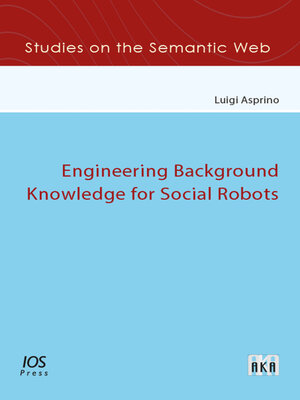Engineering Background Knowledge for Social Robots
ebook ∣ Studies on the Semantic Web
By L. Asprino

Sign up to save your library
With an OverDrive account, you can save your favorite libraries for at-a-glance information about availability. Find out more about OverDrive accounts.
Find this title in Libby, the library reading app by OverDrive.



Search for a digital library with this title
Title found at these libraries:
| Library Name | Distance |
|---|---|
| Loading... |
Social robots are embodied agents that perform knowledge-intensive tasks involving several kinds of information from different heterogeneous sources.
This book, Engineering Background Knowledge for Social Robots, introduces a component-based architecture for supporting the knowledge-intensive tasks performed by social robots. The design was based on the requirements of a real socially-assistive robotic application, and all the components contribute to and benefit from the knowledge base which is its cornerstone. The knowledge base is structured by a set of interconnected and modularized ontologies which model the information, and is initially populated with linguistic, ontological and factual knowledge retrieved from Linked Open Data. Access to the knowledge base is guaranteed by Lizard, a tool providing software components, with an API for accessing facts stored in the knowledge base in a programmatic and object-oriented way. The author introduces two methods for engineering the knowledge needed by robots, a novel method for automatically integrating knowledge from heterogeneous sources with a frame-driven approach, and a novel empirical method for assessing foundational distinctions over Linked Open Data entities from a common-sense perspective. These effectively enable the evolution of the robot's knowledge by automatically integrating information derived from heterogeneous sources and the generation of common-sense knowledge using Linked Open Data as an empirical basis. The feasibility and benefits of the architecture have been assessed through a prototype deployed in a real socially-assistive scenario, and the book presents two applications and the results of a qualitative and quantitative evaluation.







